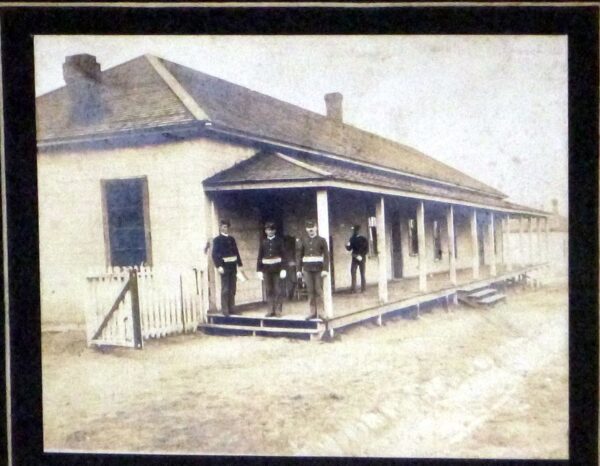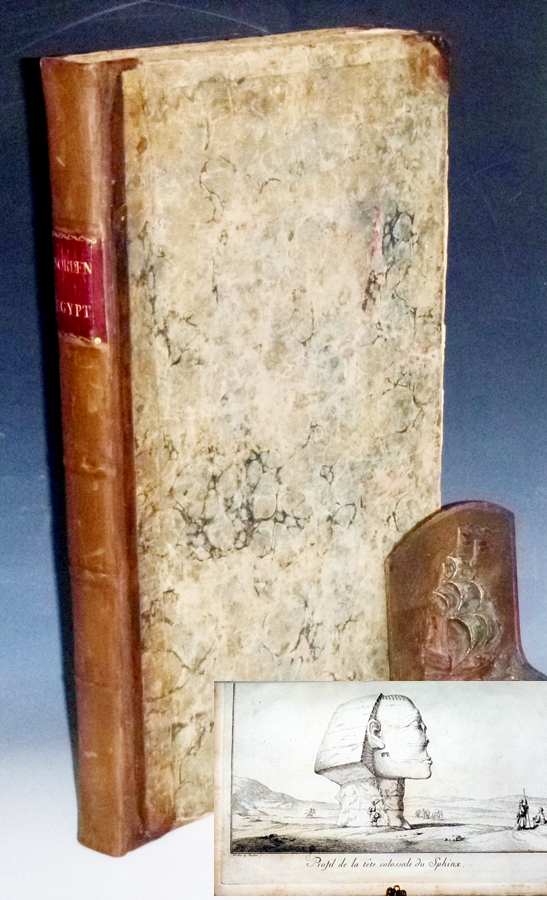
Budge, Sir E.A. Wallis
Octavo. Volume 2. cxi, 351 pages. Illustrated with 73 plates. Budge's summarized introduction shows that practically every nation from China to Ireland and from Mongolia to Abyssinia had loved to read the stories, credible, semi-mythical, and fabulous, which have sprung up round the name of Alexander the Great. Every known version of the legendary history of Alexander is based upon the Greek history falsely attributed to Callisthenes, his companion and friend that the Egyptians made Alexander to be an incarnation of one of their old primeval gods by a Macedonian queen. And, that the Christians made him a kinsman and an associate of the Patriarchs, and later a prophet and a repository of the secrets of Christ, and finally a Christian. An earlier volume in the series provided the Ethiopic text. The mythology was recognized by J. Frank Dobie in his "Between the Comanche and the Rattlesnake" (Southwest Review, 1955, p. 40ff.). Bound in rust pictorial gilt cloth, spine lettering gilt but dulled, only light wear to corners and spine ends, front and rear hinges apparently reglued, previous owner's bookplate and small bookseller's ticket to front pastedown, internally clean without foxing.

Budge, E. A. Wallis
Large Octavo. In 2 volumes. Vol. I xxviii, 652 and Vol. II, x, 618 pages, index, both volumes extensively illustrated. Budge traveled extensively. This book is a classic on his travel, discovery, and the key work on the Sudan after the 1821 version. The first part is a brief narrative of the results of four Missions, and a description of the temples, pyramids and more with the help of his friends Lord Kitchener, Sir Reginald Wingate and their staffs. With their help he was able to visit, examine and partly excavate these historic areas. The second part of this work deals with the history of the Sudan. The narrative begins with the great raid made in the country by Seneferu, a king of Egypt, who reigned about B.C. 3766, and ends with a summary of the principal events which took place there in A.D. 1904. Bound in maroon pictorial gilt cloth depicting an native with palm trees in the back, lettering and top edge gilt, some spots of rubbing with wear through to corners, rear hinge of volume two cracked and front hinge starting. Spines of both volumes have markings where labels were apparently inset, but not an ex-library set, no names or book plates, internally clean without foxing.

Budge, E. A. Wallis
Small Octavo. 3rd impression. (First published in 1899, 2nd impression 1901). .xv[xvi-xviii], 234 pages illustrated with 20 illustrations. Subjects contained in this volume; Antiquity of magical practices in Egypt -- Magical stones or amulets -- Magical figures -- Magical pictures and formulae, spells, etc. -- Magical names -- Magical ceremonies -- Demoniacal possession, dreams, ghosts, lucky and unlucky days, horoscopes, prognostications, transformations, and the worship of animals. Bound in orange cloth lettered and decorated in black, spine lettering black, previous owner's bookplate, some bubbling to cloth. A very good copy.

Budge, Sir E.A. Wallis
Octavo. Frontispiece, viii, 359 pages, Sixty-four full page black and white plates. This is the companion volume to the Legends of Our Lady Mary the Perpetual Virgin which was published in November, 1922. A collection of one hundred and ten tales of miracles related to the Virgin Mary, translated From Ethiopic manuscripts: "The original texts, with English translations, of about forty of these were published by me in the volume "Miracles of the Virgin Mary", which Lady Meux printed for private circulation in 1900." Bound in blue pictorial gilt cloth, spine lettering gilt, rear hinge had been reglued, light wear to corners, front portion of dust jacket laid in, bookseller's ticket. A very good copy of this scarce work.

Bezold, Carl; E.A. Wallis Budge
Quarto. xciv, 157 pages, 24 leaves of plates. A very rare book with the Akkadian text. In the autumn of 1887, the Amarna Archive was discovered. This led to new understanding of the proto-canaanitish influence on early Semitic languages. The work of Bezold, the Assyriologist scholar and Budge, the Egyptologist and Semitic scholar combined to make this the essential starting place for Akkadian (and early allied semitic languages). In this, the first edition of the Amarna letters in the British Museum (BB 1892) scholars realized these letters and dispatches were key to proto-canaanitish vocabulary and were related to Amenophis III. The Bookplates of S.D. Driver (Magdalen College, Oxford) and later of his son Sir. Geoffrey R. Driver, who also was an accomplished Semitic scholar, represent a very strong association copy, Bound in brown cloth over beveled boards, spine lettering gilt, yellow coated endpapers, some light scattered foxing mostly to the verso of plates. light wear to corners, joints rubbed, a handsome copy.

